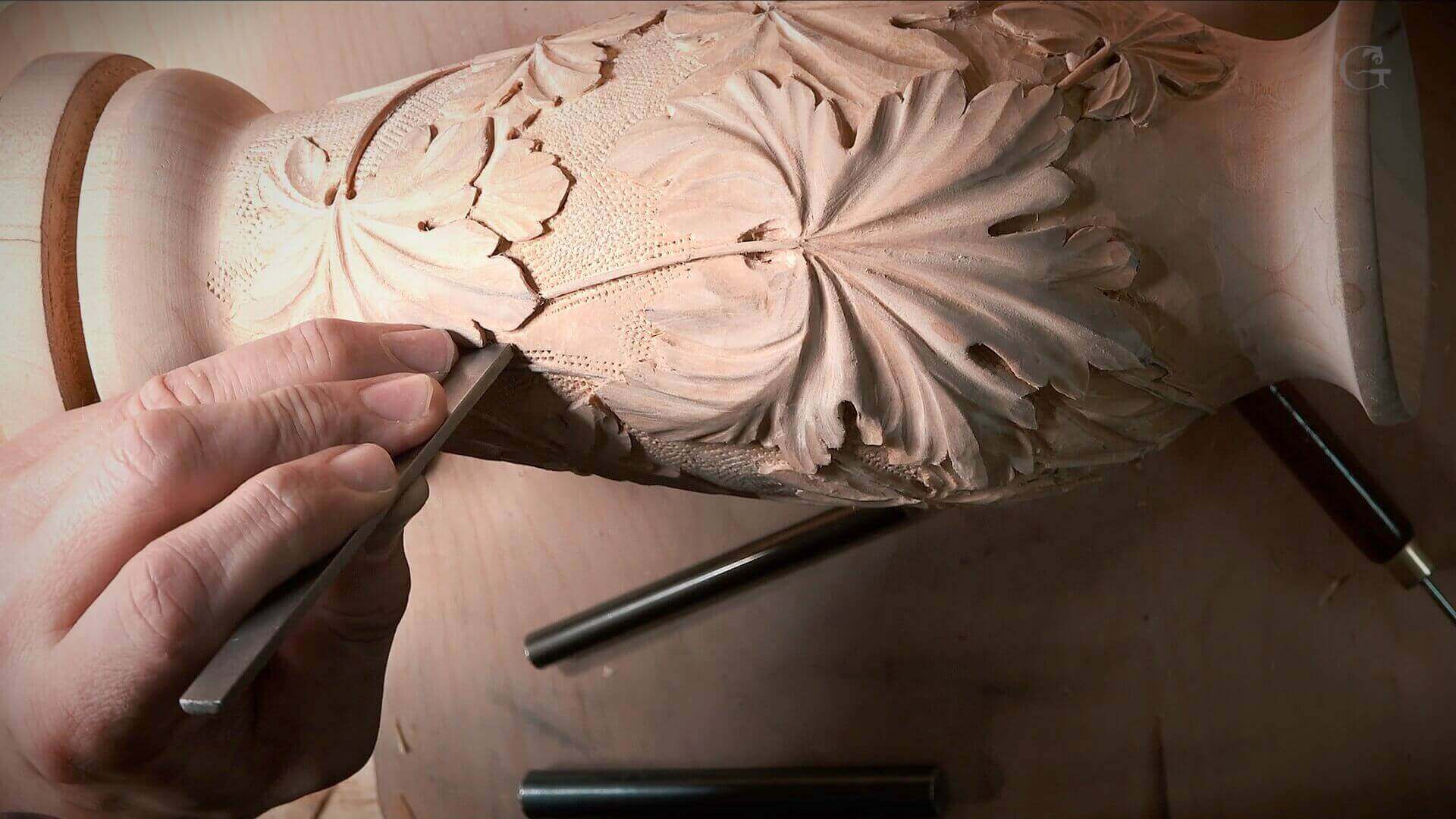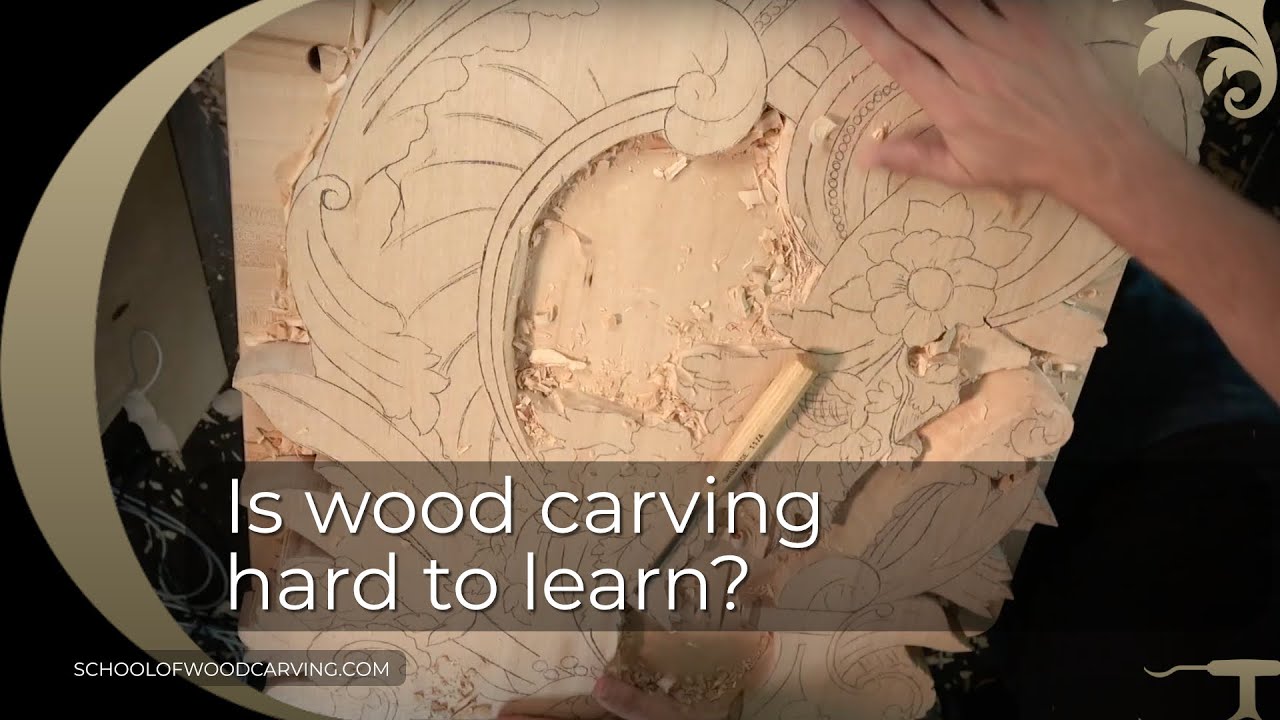Wood carving is a fascinating craft that allows you to transform a simple block of wood into a beautiful piece of art. But is wood carving hard to learn? Let’s find out!
Now, you might be thinking, “Is wood carving something I can actually do?” Well, here’s the good news: wood carving is a skill that anyone can learn with practice and patience.
But before we dive into the details, let me tell you a little secret: wood carving is not about innate talent or natural ability. It’s about curiosity, creativity, and the willingness to learn. So, if you’re up for the challenge, let’s explore the world of wood carving together!

Is Wood Carving Hard to Learn?
Wood carving is a traditional art form that has been practiced for centuries. Many people are drawn to wood carving because of its beauty and the satisfaction that comes from creating something with their own hands. But is wood carving hard to learn? In this article, we will explore the intricacies of wood carving and discuss the challenges and rewards that come with it. Whether you’re a beginner or someone considering taking up wood carving as a hobby, this article will provide you with valuable insights and information.
Understanding the Basics
Wood carving is the process of transforming a piece of wood into a three-dimensional artwork by removing excess material. It requires skilled hands, patience, and a keen eye for detail. The first step in learning wood carving is to familiarize yourself with the basic techniques and tools used in the craft.
One of the fundamental techniques in wood carving is known as relief carving. This involves carving away portions of the wood to create a raised design. Another technique is called chip carving, which involves making small, deliberate cuts to create intricate designs and patterns.
To begin your wood carving journey, you’ll need a few essential tools. These include a carving knife, chisels of varying sizes, and a mallet. Additionally, you’ll need a piece of wood suitable for carving. Beginners often start with softer woods such as basswood or pine, as they are easier to work with and forgiving of mistakes.
Learning Curve and Patience
Wood carving, like any skill, takes time and practice to master. It requires a great deal of patience and perseverance to develop the necessary skills and techniques. The learning curve can be steep, especially for beginners, as it involves understanding the properties of different types of wood, learning how to handle and sharpen tools, and honing precision and control.
Initially, you may find wood carving challenging as you get accustomed to the tools and techniques. However, with consistent practice and a willingness to learn from mistakes, you will gradually improve. It is essential to embrace the learning process and not get discouraged by initial difficulties. As the saying goes, “Rome wasn’t built in a day,” and the same applies to wood carving. Keep practicing, and with time, you will see your skills grow and your confidence soar.
Overcoming Challenges
Wood carving presents its fair share of challenges, but they are not insurmountable. One of the main challenges beginners face is the fear of making mistakes. The thought of ruining a piece of wood after hours of hard work can be daunting. However, mistakes are part of the learning process. Embrace them as learning opportunities and use them to improve your carving skills.
Another challenge beginners may encounter is achieving the desired level of detail. Creating intricate designs requires a steady hand and the ability to visualize the end result. It may take time to develop the muscle memory and hand-eye coordination needed for precise carving. Start with simpler projects and gradually work your way up to more complex designs. With practice, you’ll gain confidence in your ability to bring intricate details to life.
Furthermore, time management can be a challenge when it comes to wood carving. Carving is a meticulous and time-consuming process that requires focus and concentration. It’s important to set aside dedicated time for carving and create a calm and organized workspace. By prioritizing your carving practice and eliminating distractions, you’ll be able to fully immerse yourself in the art and achieve better results.
Benefits of Wood Carving
Wood carving offers numerous benefits that make the learning process worthwhile. Here are some of the advantages of taking up wood carving as a hobby:
1. Stress Relief
Wood carving is a meditative and calming activity that helps reduce stress and anxiety. Focusing on carving and the repetitive motion of the tools can clear the mind and promote relaxation. It provides an opportunity to disconnect from the digital world and engage with a tactile and creative process.
2. Creativity and Self-Expression
Wood carving allows for self-expression and provides a creative outlet. Through carving, you can bring your ideas and imagination to life. It offers the freedom to explore different designs, styles, and techniques, enabling you to create unique and personalized artworks.
3. Sense of Achievement
Completing a wood carving project brings a great sense of accomplishment. Witnessing the transformation of a block of wood into a beautifully crafted artwork instills pride and boosts self-confidence. Each finished carving serves as a tangible reminder of your progress and growth as a wood carver.
4. Connection to Tradition
Wood carving is an art form deeply rooted in tradition and history. By taking up this craft, you become part of a rich heritage and join the ranks of skilled artisans throughout the ages. Wood carving allows you to preserve and carry forward a timeless tradition while adding your unique touch.
5. Personalized Gifts and Home Decor
One of the joys of wood carving is the ability to create personalized gifts and home decor items. Hand-carved wooden objects make thoughtful and cherished gifts for loved ones. Additionally, carved decorations and sculptures add a touch of elegance and warmth to any living space. Wood carving allows you to infuse your personal touch into every piece you create.
Conclusion
Wood carving is an art form that requires dedication, patience, and a willingness to learn. While it may be challenging to master at first, the rewards are immeasurable. Through practice and perseverance, you can develop the skills needed to create stunning wood carvings. Embrace the learning process, overcome challenges, and enjoy the therapeutic and creative benefits that wood carving brings. So, is wood carving hard to learn? Yes, it can be, but with passion and commitment, anyone can learn this timeless craft and experience the joy of seeing their creations come to life. Happy carving!
Key Takeaways: Is Wood Carving Hard to Learn?
- Wood carving can be challenging at times, but with patience and practice, it can be learned by anyone.
- Start with simple projects and gradually work your way up to more complex designs.
- Having the right tools and equipment is essential for successful wood carving.
- Taking a wood carving class or finding online tutorials can greatly help in learning the craft.
- Always prioritize safety and use protective gear when working with sharp tools.
Frequently Asked Questions
Wood carving is a popular art form that involves shaping and sculpting wood into various objects. If you’re interested in learning wood carving, you may be wondering if it’s a difficult skill to acquire. Here are some frequently asked questions about learning wood carving:
1. What are the basic skills required to learn wood carving?
While wood carving can be challenging, it doesn’t require any prior experience. The most important skill is patience. Carving wood requires steady hands, precision, and attention to detail. You’ll also need good hand-eye coordination and the ability to visualize the final product.
It’s helpful to have some knowledge of different wood types and the tools used in carving. Additionally, understanding the basics of design and composition will enhance your carving skills.
2. How long does it take to become proficient in wood carving?
The time it takes to become proficient in wood carving depends on various factors, including the complexity of the projects you tackle and the amount of time you dedicate to practicing. It’s a skill that requires patience and practice, so don’t expect to become an expert overnight.
With consistent practice, you can start developing basic carving techniques within a few months. However, becoming truly proficient can take years of dedication and continuous learning. It’s important to focus on the learning process and enjoy the journey rather than rush to achieve mastery.
3. What are some common challenges faced by beginners in wood carving?
Beginners in wood carving often encounter challenges such as controlling the carving tool, maintaining consistency in depth and shape, and preventing wood from splitting or splintering. It can also be difficult to properly sharpen and care for carving tools.
Additionally, beginners may struggle with design and composition, as well as choosing the right wood for their projects. Overcoming these challenges requires patience, persistence, and a willingness to learn from mistakes.
4. Are there any safety precautions to consider when learning wood carving?
Yes, safety is a crucial aspect of wood carving. It’s important to wear protective gear such as safety goggles, gloves, and a dust mask to protect yourself from flying wood particles and inhaling dust. Carving tools can be sharp, so being cautious and practicing good tool control is vital.
Having a clean and well-lit workspace, with proper ventilation, is essential. It’s also recommended to learn proper tool handling techniques and to start with simpler projects before attempting more intricate carvings.
5. Can wood carving be a rewarding hobby to pursue?
Absolutely! Wood carving can be an incredibly rewarding hobby both creatively and mentally. It allows you to express your artistic abilities, while also providing a meditative and relaxing experience. The satisfaction of transforming a block of wood into a beautiful piece of art is unmatched.
Wood carving also offers a sense of accomplishment as you improve your skills and see your progress over time. Whether you carve small figurines, intricate sculptures, or functional items, the joy of creating something with your own hands is a unique and fulfilling experience.

Is wood carving hard to learn?
Summary
Wood carving can be challenging, but it’s not impossible to learn. With practice and patience, anyone can develop this skill. Start with basic projects and gradually work your way up to more complex designs. Remember to use the right tools and techniques, and don’t be afraid to make mistakes. Wood carving can be a rewarding and enjoyable hobby if you’re willing to put in the effort.
So, the answer to “Is wood carving hard to learn?” is yes, it may be difficult at first, but with dedication and perseverance, you can become a skilled wood carver. Don’t give up, keep learning and improving, and soon you’ll be creating beautiful pieces of art with your own hands.
